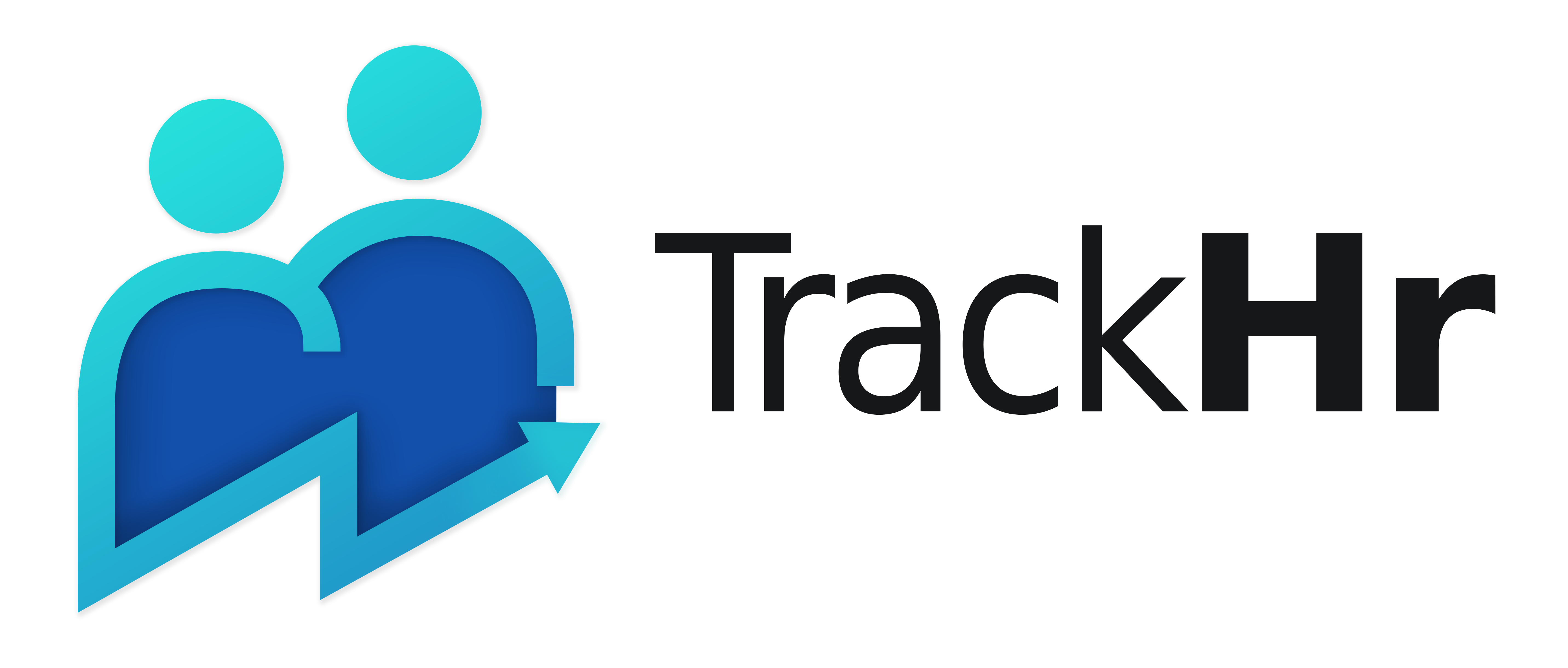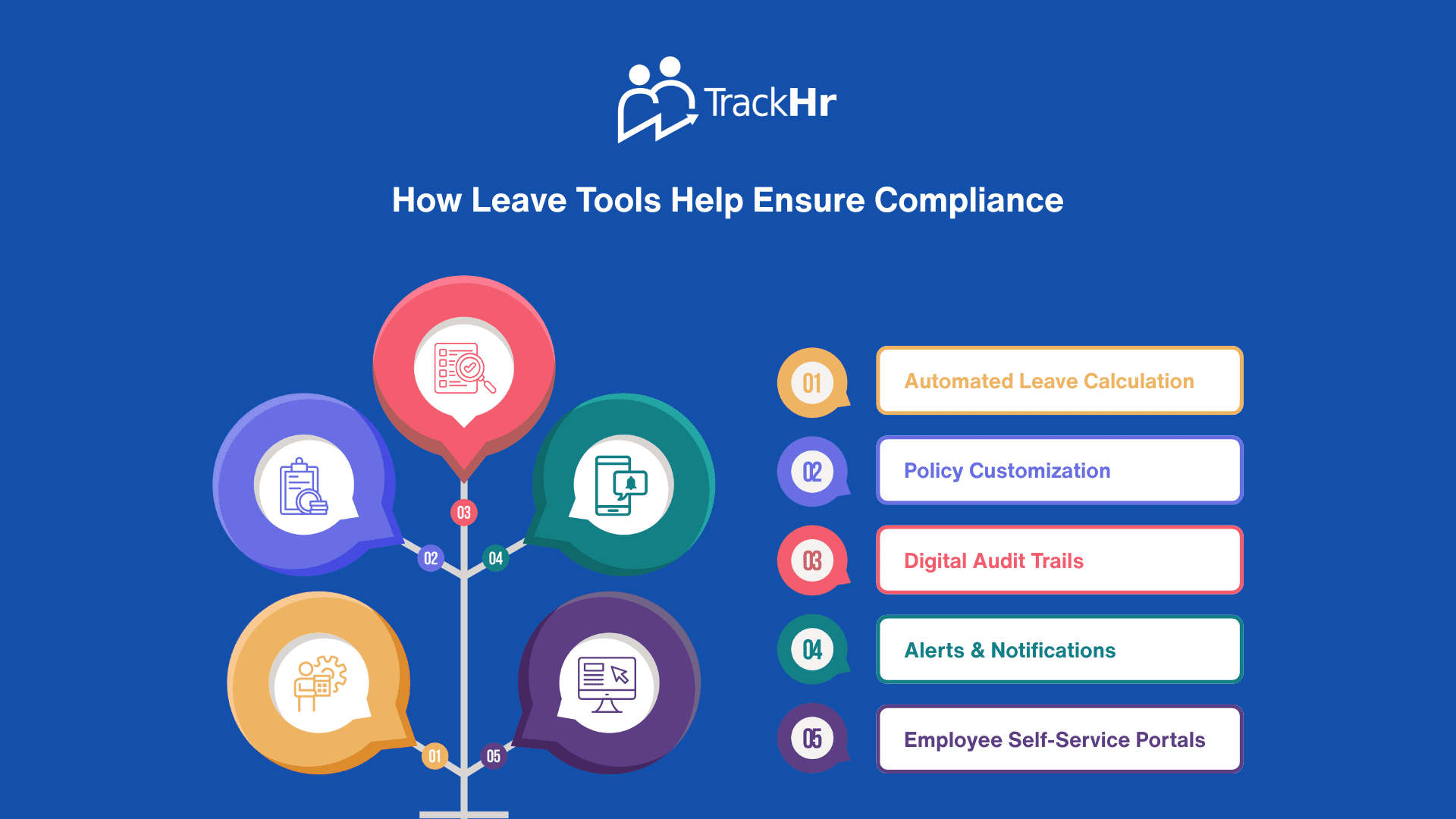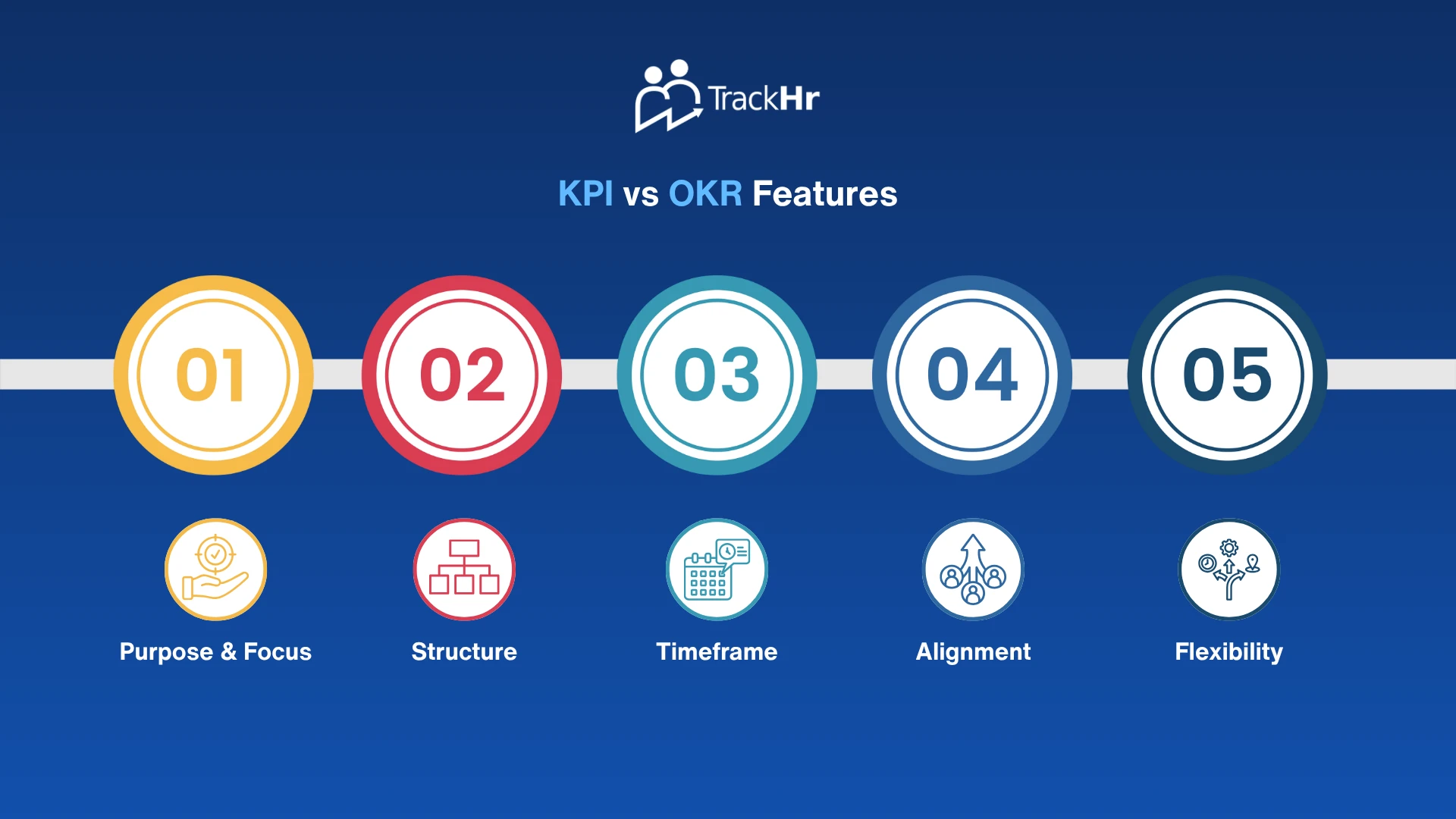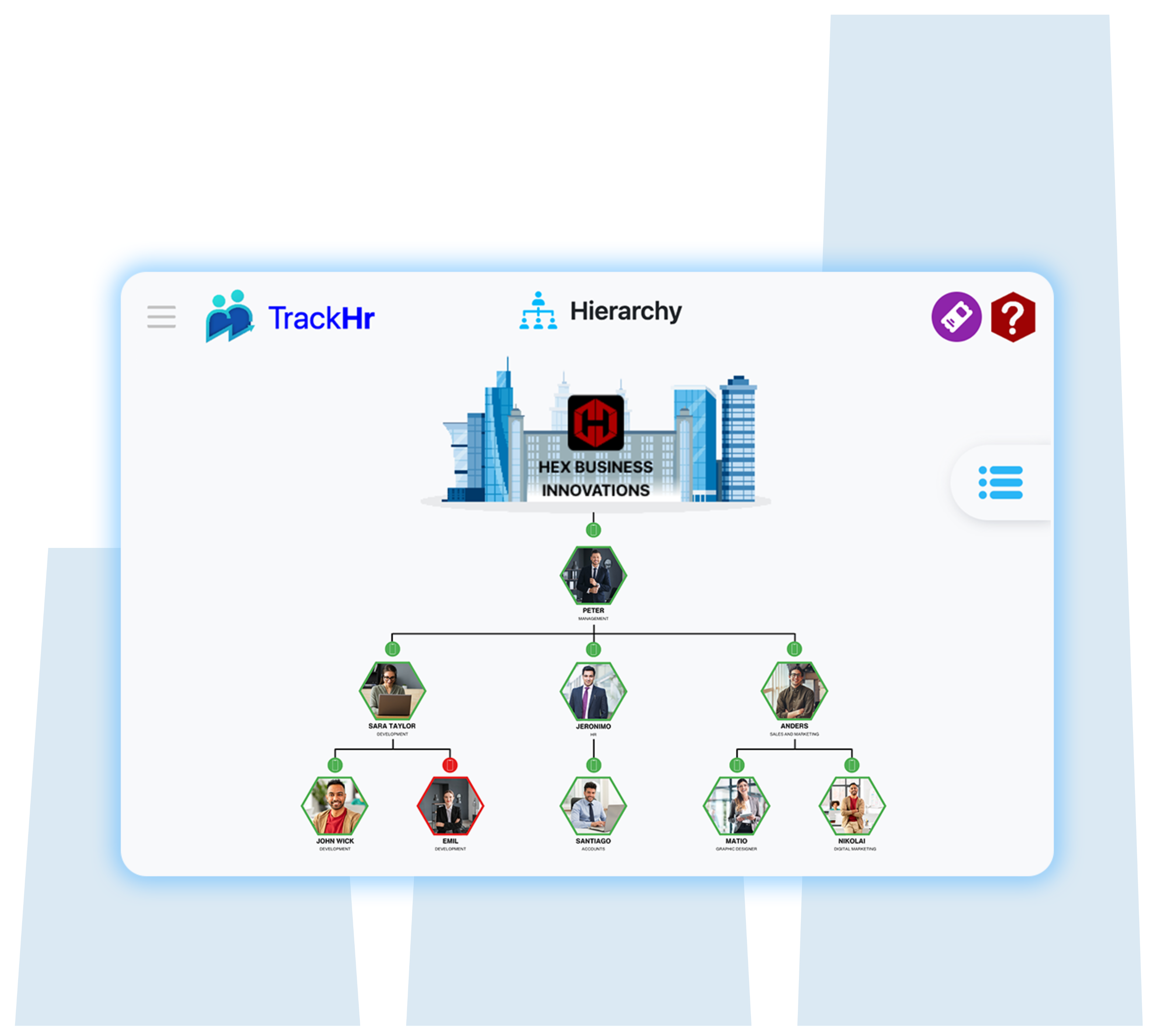Blog
Geolocation vs. Geofencing: What’s Best for Your Workforce?
- June 19, 2025
- 9:48 am
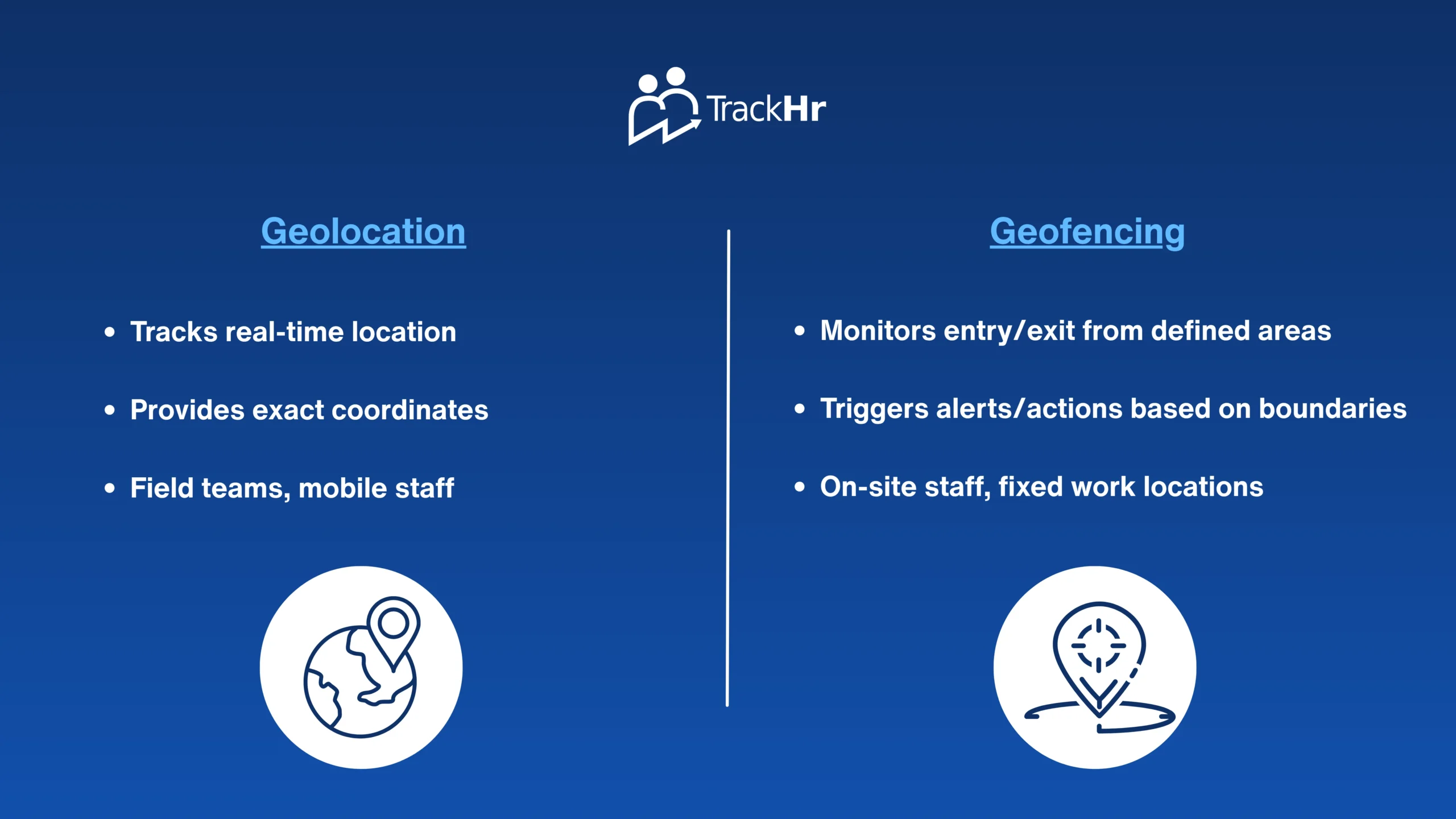
With the flexible and remote working options that companies are embracing now, consummate employee location monitoring tools have come into use. Geolocation and geofencing are two of the most popular technologies with different functions that are similar or confused with each other.
In this article, we explore the key distinctions in the geolocation vs. geofencing debate to help you determine the best solution for your workforce. Additionally, get to know how both technologies are used by TrackHr to make attendance easier and make things more productive.
What is Geolocation?
Geolocation technology monitors the physical location of an object (in real-time) by use of GPS, cellular networks, or Wi-Fi. It enables companies to monitor the location of their employees and in this case, it can be used especially when you need to track field employees, delivery providers, or mobile service providers.
Geolocation technology monitors the physical location of an object (in real-time) by use of GPS, cellular networks, or Wi-Fi. It enables companies to monitor the location of their employees and in this case, it can be used especially when you need to track field employees, delivery providers, or mobile service providers.
What is Geofencing?
Geofencing is a virtual fence that is erected around a certain physical space. When the device used by an employee gets into or out of this zone, the system can automatically perform some actions e.g. clock-in, clock-out, deliver alerts, or update the attendance records.
Teams in specific locations such as offices, warehouses, and shops can make good use of geofencing. It improves security, avoids fraudulent withdrawals on time, and automatizes the process of attendance collecting mechanical time stamps when workers are physically present inside the specified zone.
Geolocation vs. Geofencing: Key Differences Explained
Although geolocation and geofencing are used in tracking the location of objects, there are a number of ways in which the two differ. Geolocation aims to provide the precise location of any given device in real-time, which would be best suited when it comes to making mobile teams. It offers a more dynamic tracking but might be more battery-consuming and does not feature built-in automation functionality in most cases.
On the contrary, geofencing is designed to be automated. It is meant to track people on the go in and out of designated zones and make responses such as marking attendance or issuing alerts. This qualifies it to apply in location-based rules and time tracking without monitoring.
The second difference is the best use cases. Geolocation is ideal when the field teams/mobile staff work in a different environment, and the geofencing would suit employees whose location is fixed and requires highly structured attendance and compliance verification.
Which One Is Right for Your Workforce?
Whether to go with geolocation or geofencing is related to your business model:
- In case your employees travel often to different places, like sales representatives, technicians, or couriers, then geolocation will be the most suitable since it will give you visibility in real-time at different points.
- In case your organization has a single or several permanent workplaces and you need to automate attendance and minimize work time theft, geofencing is a perfect choice.
In numerous organizations, the hybrid original will provide the best outcomes where both technologies are merged.
How TrackHr Combines Both Technologies
TrackHr provides a smart workforce management system that combines the geolocation and geofencing functionality:
- Geolocation makes it possible to monitor the work of mobile teams in real-time and determine, with the help of which manager, moves people and imposes the work to be done on them.
- Geofencing helps mechanize attendance since it restricts the check-in and out of employees, being only possible when in the specific work site.
- The single platform offers comprehensive transparency, automated notifications, and proper records, which makes the management of the workforce and compliance easy.
Conclusion
In the debate of geolocation vs. geofencing, the best choice depends on the nature of your workforce and your operational needs. The geolocation gives leeway that is paramount in mobile and active teams. In the case of geofencing, structured and location-based teams are accountable and automated. TrackHr enables you to have the best of each one of these worlds, provided it is optimized in terms of security, efficiency, and scalability.
Table of Contents
Exhausted from managing performance management manually?
